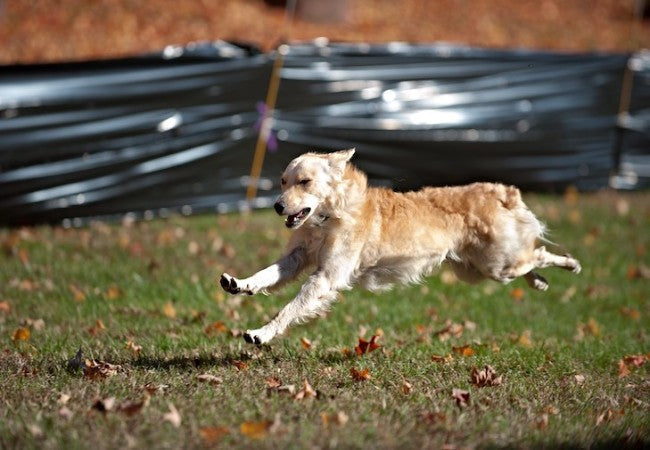Mudi Breed Guide 2025: Energetic Hungarian Herding Pro 🐶✨

In this article
Mudi Breed Guide 2025: Energetic Hungarian Herding Pro 🐶✨
By Dr. Duncan Houston BVSc
Introduction 🌟
The Mudi is a rare and versatile herding dog from Hungary, prized for its courage, agility, and intelligence. Often seen in merle coats, this medium-sized working breed excels in farm duties, dog sports, and as a watchful family companion. This 2025 guide offers a deep dive into their history, temperament, health needs, grooming routines, training strategies, and ideal homes.
1. Origins & History 📜
- Hailing from Hungary, the Mudi likely arose in the 19th century via mixing Pumi, Puli, and German Spitz types.
- Formally recognized as a breed in the 1930s, nearly vanished during WWII, then revived in the 1960s; accepted into FCI in 1966 and AKC Foundation Stock Service in 2004.
- Historically served as farm dogs: herding sheep, large livestock, hunting vermin, and guarding property.
2. Size & Appearance 🧩
- Height: 15–18.5″; Weight: 18–29 lb.
- Coat: Medium-length double coat—wavy to curly on body, straight on face/legs; colors include black, brown, gray, cream, white, and merle.
- Physical traits: pointed ears, expressive eyes, and often a bobtail, all giving an agile, alert presence.
3. Temperament & Personality ❤️
- Highly intelligent, brave, loyal, and eager to work—but can bond strongly to one person or family unit.
- Alert and vocal—excellent watchdogs, but they bark to alert, not aggression.
- Reserved with strangers, balanced and gentle with children and familiar pets when properly socialized.
4. Exercise & Mental Enrichment 🧠
- Highest energy: needs 60–90 min+ per day of physical activity plus mental challenges.
- Thrives with structured "jobs": herding, agility, flyball, obedience, tracking, search & rescue in various countries.
- Lack of stimulation can lead to vocalization, digging, or destructiveness.
5. Grooming & Coat Care ✂️
- Low-maintenance: weekly brushing keeps coat healthy; seasonal sheds require extra attention.
- Bath occasionally; routine ear cleaning, nail trims, and teeth brushing are essential.
6. Health & Lifespan 🩺
- Life expectancy: 12–14 years, sometimes up to 16.
- Generally healthy, though prone to hip/elbow dysplasia and occasional eye conditions—screening recommended.
7. Nutrition & Feeding 🍽️
- Balanced diet for medium, active breeds; joint-support supplements may benefit due to herding demands.
- Feed 2 meals/day, adjusting calories to body condition and energy levels.
8. Training & Socialization 🎓
- Highly trainable with positive reinforcement; sensitive to harsh corrections.
- Early exposure to different people, pets, and environments reduces reserve with strangers.
- Structured leadership and consistent routines foster a well-balanced dog.
9. Family Fit & Lifestyle 🏡
- Best suited for homes that match their energy: active individuals or families with yards or farm access.
- Not ideal for sedentary homes, small apartments, or novice owners.
- Good with children and other dogs when well-socialized; high prey drive may challenge small-pet households.
10. Pros & Cons ⚖️
- Pros: Loyal, energetic, eager to learn, versatile working dog, low grooming.
- Cons: High exercise & mental needs, barking, reserve around strangers, not suited for novice or inactive homes.
11. Adoption & Breeder Guidance 🌟
- Look for breeders testing for hip/elbow health and temperament; demand lineage and care.”.
- Rescues and specialized Mudi clubs are rare but valuable resources for adoption.
- Typical puppy cost: $1,500–3,000 due to rarity and breeder standards.
12. FAQs ❓
- Do they shed? Moderate shedding, manageable with weekly grooming.
- Are they good with kids? Yes with older children, early socialization, and supervision.
- Do they bark a lot? Alert-level barking is normal; training quiet cues help.
- Can they live in apartments? Better suited for homes with space and activity; apartments require rigorous exercise.
- How long do they live? Typically 12–14 years; up to 16+ with great care.
13. Ask A Vet,🐾
- Ask A Vet: Get personalized advice on joint care, nutrition, behavior, and guarding instincts.
14. Final Thoughts ✅
The Mudi is a spirited, intelligent, and loyal herding dog—perfect for experienced, active owners who can meet its high exercise and mental needs. With the right guidance and structure, a Mudi becomes an exceptional companion and working partner. To support your Mudi's journey, visit AskAVet.com and download the Ask A Vet app for expert care and customized support.






